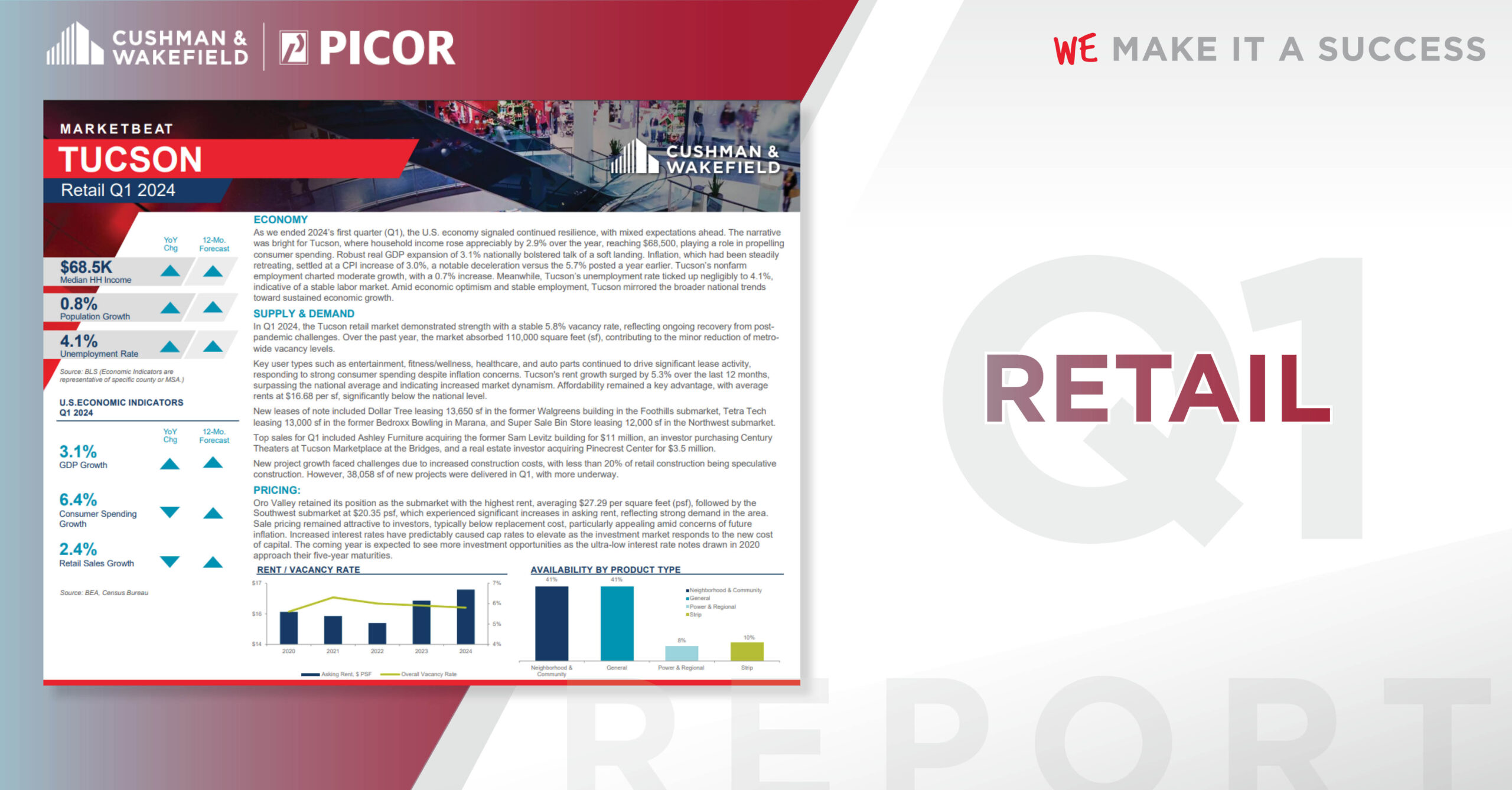To read the full report on Tucson’s retail activity in Q1, click here.
In Q1 2024, the Tucson retail market demonstrated strength with a stable 5.8% vacancy rate, reflecting ongoing recovery from post-pandemic challenges. Over the past year, the market absorbed 110,000 square feet (sf), contributing to the minor reduction of metro-wide vacancy levels.
Key user types such as entertainment, fitness/wellness, healthcare, and auto parts continued to drive significant lease activity, responding to strong consumer spending despite inflation concerns. Tucson’s rent growth surged by 5.3% over the last 12 months, surpassing the national average and indicating increased market dynamism. Affordability remained a key advantage, with average rents at $16.68 per sf, significantly below the national level.
New leases of note included Dollar Tree leasing 13,650 sf in the former Walgreens building in the Foothills submarket, Tetra Tech leasing 13,000 sf in the former Bedroxx Bowling in Marana, and Super Sale Bin Store leasing 12,000 sf in the Northwest submarket.
Top sales for Q1 included Ashley Furniture acquiring the former Sam Levitz building for $11 million, an investor purchasing Century Theaters at Tucson Marketplace at the Bridges, and a real estate investor acquiring Pinecrest Center for $3.5 million.
New project growth faced challenges due to increased construction costs, with less than 20% of retail construction being speculative construction. However, 38,058 sf of new projects were delivered in Q1, with more underway.
Oro Valley retained its position as the submarket with the highest rent, averaging $27.29 per square feet (psf), followed by the Southwest submarket at $20.35 psf, which experienced significant increases in asking rent, reflecting strong demand in the area. Sale pricing remained attractive to investors, typically below replacement cost, particularly appealing amid concerns of future inflation. Increased interest rates have predictably caused cap rates to elevate as the investment market responds to the new cost of capital. The coming year is expected to see more investment opportunities as the ultra-low interest rate notes drawn in 2020 approach their five-year maturities.






